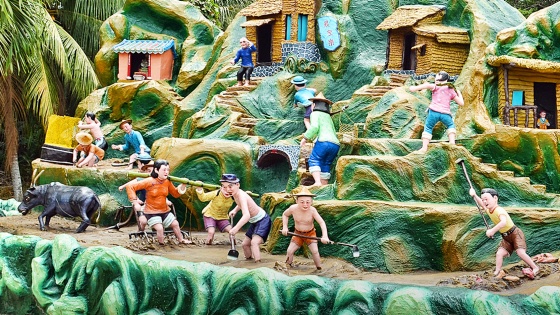
Overview
Haw Par Villa, generally known as Tiger Balm Gardens, is undoubtedly an legendary concept park located in Singapore. This special attraction presents website visitors a glimpse into Chinese mythology and folklore as a result of its amazing and intricate statues, dioramas, and exhibits. Let's just take a better think about the important factors of the intriguing desired destination.
History:
Haw Par Villa was at first created by Aw Boon Haw, the magnate guiding the famed Tiger Balm ointment. The park opened its doorways in 1937 as a means to both of those entertain and teach persons about common Chinese values, record, and beliefs. Throughout the many years, it has been through quite a few renovations but has managed to keep its initial allure.
Mythological Figures:
Among the list of key highlights of Haw Par Villa is its broad assortment of statues depicting people from Chinese mythology and legends. Guests will encounter figures like Journey to the West's Solar Wukong (the Monkey King), Eight Immortals from Daoism, along with essential deities like Guanyin (Goddess of Mercy) and Buddha Shakyamuni.
Topic Parks within just Haw Par Villa:
In Haw Par Villa itself are various unique places or sections:
Ten Courts of Hell: Maybe Probably the most intriguing aspects of Haw Par Villa is Discovering "The 10 Courts of Hell." Listed here site visitors can witness graphic scenes depicting punishments for various sins dependant on classic Chinese beliefs about afterlife retributions.
Taoist-Mythology Sculptures: This location showcases amazing sculptures depicting stories from historic Taoist myths. These vibrant artworks provide to lifestyle tales that were passed down by generations in vivid detail.
Backyard garden Sceneries: Beyond mythological sculptures lie serene click here gardens stuffed with picturesque landscapes adorned with beautiful flowers and crops—an ideal Room for visitors to chill out amidst mother nature's elegance or delight in an off-the-cuff stroll.
Teochew Opera Centre: The Teochew Opera Centre is a traditional theater environment that consistently hosts performances from the Teochew opera, a major method of Chinese musical drama with distinctive regional traits in its costumes, audio, and storytelling.
Cultural Importance:
Haw Par Villa retains enormous cultural importance as it offers a possibility to explore numerous facets of Chinese lifestyle, folklore, and religious beliefs. It serves as both equally an open up-air museum in addition to a spot for communal activities like festivals or educational programs enabling guests to achieve insights into ancient Chinese traditions.
In addition, the park's unique intention was to educate site visitors about moral values via vivid depictions of heaven and hell – gratifying virtue and condemning vices. Hence Haw Par Villa acts as not only an amusement park but additionally a moral information teaching essential ethical principles from classic Chinese philosophy.
Modern day Relevance:
Irrespective of staying created many years back, Haw Par Villa carries on to entice locals and tourists alike due to its uniqueness and timeless enchantment. The park has managed to blend custom with up to date aspects by Arranging gatherings for example art exhibitions, lantern festivals all through mid-autumn celebrations showcasing the fusion amongst contemporary aesthetics and typical themes linked to the villa.
In recent years, there are actually attempts by authorities to refurbish elements of the attraction though making certain its historic authenticity. This ongoing maintenance makes sure that Haw Par Villa continues to be available for generations to return although preserving its abundant heritage value.
Conclusion:
Haw Par Villa stands out between Singapore's attractions for its immersive knowledge into legendary realms by means of intricately-built sculptures depicting deities, legends, morality tales and punishments in Taoist mythology-impressed gardenscapes - all in just a reflective environment emphasizing existence classes dependant on compassion shown in direction of Some others as it conveys ancient wisdom guided by ethical principles conducive for self-improvement Situated amidst lovely scenic landscapes rendering it acceptable both for cultural exploration enthusiasts considering China's extensive mythology/heritage/backgrounds/legends at the same time(proporotinately with owing rverence to central topic of symbolizing regular Chinese lifestyle and beliefs).